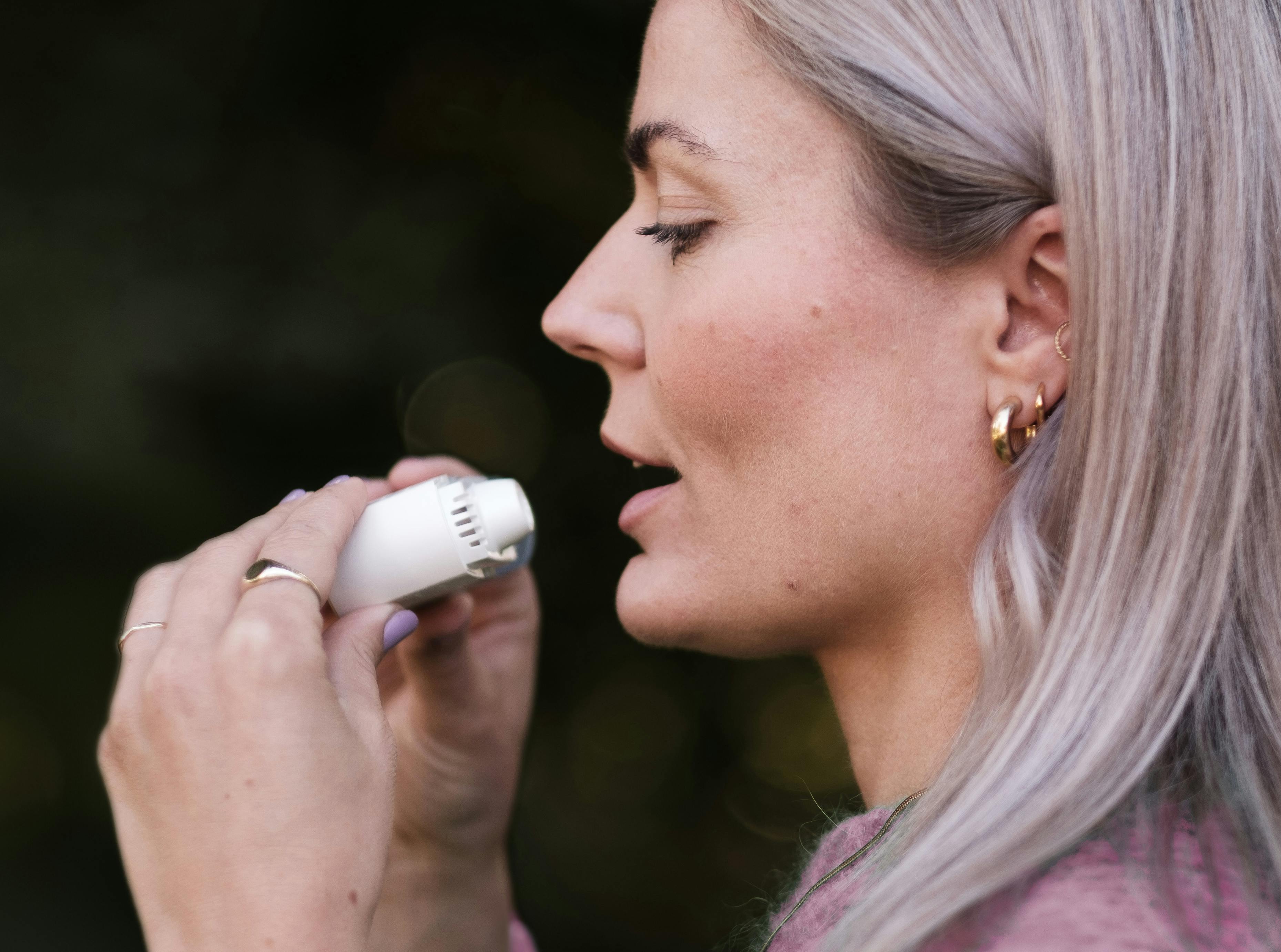Oxygen Depletion: Subtle Signs Your Body Might Be Lacking This Vital Element
You breathe without thinking—but what if your body is quietly telling you it’s not getting enough oxygen? It’s not always dramatic like gasping or dizziness. Sometimes, the signs are subtle: persistent fatigue, foggy thinking, restless sleep, or even an odd craving for ice. These aren’t just quirks—they could be your body’s way of signaling an O2 shortfall. Left unchecked, low oxygen levels can strain your heart, cloud your mind, and chip away at your overall well-being. That’s why we’ve expanded our guide of often-overlooked ways your body might be telling you it needs more oxygen.
1. Unusual Fatigue: The Silent Energy Drain

Fatigue is a common experience, often attributed to a busy lifestyle or lack of sleep. However, when fatigue becomes chronic and disproportionate to your level of activity, it may signal an underlying oxygen shortage. Oxygen is essential for the production of adenosine triphosphate (ATP), the energy currency of the cell. When oxygen levels are insufficient, ATP production plummets, leaving you feeling drained and lethargic. This type of fatigue can be persistent and unrelieved by rest, indicating that the body is struggling to meet its energy demands. Understanding this connection can prompt further investigation into your oxygen levels and overall respiratory health.
2. Cognitive Fog: The Clouded Mind

Cognitive fog, or brain fog, is characterized by confusion, forgetfulness, and a lack of mental clarity. While it can be caused by numerous factors, a shortage of oxygen is a significant contributor. The brain consumes approximately 20% of the body's oxygen supply, and even a slight deficiency can impair cognitive function. Neurons, the brain's communication cells, rely heavily on oxygen to transmit signals effectively. When deprived, these signals become sluggish, leading to impaired concentration and memory. Recognizing cognitive fog as a potential indicator of oxygen shortage can lead to early interventions, such as lifestyle changes or medical evaluations, to restore cognitive vitality.
3. Unexplained Shortness of Breath: The Hidden Struggle

Shortness of breath, or dyspnea, is a more obvious sign of oxygen deficiency but can often be misattributed to stress or anxiety. However, if you find yourself unexpectedly breathless during activities that previously posed no challenge, it may be a red flag. The respiratory system is responsible for oxygenating the blood, and any impairment can lead to decreased oxygen levels reaching the tissues. This symptom can manifest suddenly or gradually and may be accompanied by a feeling of tightness in the chest. Identifying this symptom as a potential indicator of oxygen shortage can prompt timely medical attention to prevent further respiratory complications.
4. Frequent Headaches: The Pressure Within

Headaches are a common ailment with a myriad of causes, but frequent or severe headaches can be a subtle sign of oxygen deprivation. The brain is sensitive to changes in oxygen levels, and a shortage can cause blood vessels to dilate, leading to increased intracranial pressure and pain. This type of headache often presents as a dull, persistent ache that can escalate into a migraine. Understanding the link between oxygen levels and headaches can guide individuals to monitor their symptoms and seek medical advice to explore potential respiratory issues or other underlying health conditions.
5. Dizziness and Lightheadedness: The Unsteady World

Dizziness and lightheadedness are sensations that can occur when the brain receives insufficient oxygen. This can happen suddenly, causing a feeling of instability or faintness. The vestibular system, responsible for balance, relies on adequate oxygen to function properly. When deprived, it can lead to disorientation and an increased risk of falls. These symptoms are particularly concerning in older adults, where balance is already a critical issue. Recognizing dizziness and lightheadedness as potential indicators of oxygen shortage can lead to important lifestyle modifications and medical evaluations to ensure safety and well-being.
6. Cold Extremities: The Chilled Warning

Cold hands and feet are often dismissed as a minor discomfort, but they can be a subtle sign of inadequate oxygen supply. The circulatory system is responsible for delivering oxygen-rich blood to the extremities, and when oxygen levels are low, blood flow can be compromised. This results in cold, sometimes numb, fingers and toes. This symptom can be particularly noticeable in colder weather or during periods of inactivity. By understanding the connection between cold extremities and oxygen levels, individuals can take steps to improve circulation through exercise, hydration, and, if necessary, medical intervention.
7. Rapid Heart Rate: The Racing Pulse

A rapid heart rate, or tachycardia, can be an indication that the body is compensating for low oxygen levels. The heart works harder to pump oxygen-depleted blood to the tissues, resulting in an increased pulse. This symptom can occur during physical exertion or at rest and can be accompanied by palpitations or a feeling of fluttering in the chest. Monitoring your heart rate and understanding its relationship with oxygen levels can provide valuable insights into your cardiovascular and respiratory health, prompting lifestyle changes or medical evaluations as needed.
8. Muscle Weakness: The Fading Strength

Muscle weakness can be a subtle yet telling sign of oxygen deficiency. Muscles require oxygen to produce energy and function effectively. When oxygen levels are low, muscle cells struggle to generate the necessary ATP, leading to weakness and fatigue. This can manifest as difficulty performing routine tasks or a general sense of heaviness in the limbs. Recognizing muscle weakness as a potential indicator of oxygen shortage can lead to interventions such as improved nutrition, exercise, and medical assessments to enhance muscle function and overall health.
9. Skin Discoloration: The Visible Marker

Changes in skin color, particularly a bluish tint known as cyanosis, can be a visible sign of oxygen deprivation. This occurs when oxygen levels in the blood are critically low, causing the skin, lips, or nail beds to appear blue or gray. While cyanosis is more apparent in individuals with lighter skin tones, it can still be detected in those with darker skin by examining the lips and nail beds. Understanding this visible marker as a sign of oxygen shortage can prompt immediate medical attention to address potential respiratory or circulatory issues.
10. Restless Sleep: The Nighttime Struggle

Restless sleep, characterized by frequent awakenings or difficulty staying asleep, can be a subtle indicator of oxygen deficiency. During sleep, the body's demand for oxygen decreases, but if oxygen levels are already low, the body may struggle to maintain adequate supply, leading to disrupted sleep patterns. Conditions such as sleep apnea, where breathing is intermittently blocked during sleep, can exacerbate this issue. Recognizing restless sleep as a potential sign of oxygen shortage can lead to sleep studies and interventions to improve sleep quality and overall health.
11. Anxiety and Mood Changes: The Emotional Signal

Anxiety and mood changes can be unexpected signs of oxygen deprivation. The brain's emotional centers are sensitive to oxygen levels, and a deficiency can lead to increased irritability, anxiety, and even depression. This is because oxygen is crucial for neurotransmitter production, which regulates mood and emotional stability. Understanding the connection between oxygen levels and mental health can encourage individuals to seek holistic approaches to well-being, including breathing exercises, stress management, and medical evaluations to ensure optimal oxygenation and emotional balance.
12. Digestive Issues: The Gut Reaction

Digestive issues such as bloating, constipation, or indigestion can be subtle indicators of oxygen shortage. The digestive tract, like all organs, requires oxygen to function effectively. When oxygen levels are low, the digestive process can slow down, leading to discomfort and irregularity. This connection may be overlooked, as digestive issues are often attributed to diet or stress. However, recognizing these symptoms as potential signs of oxygen deprivation can lead to dietary adjustments, increased hydration, and medical consultations to improve digestive health and overall oxygenation.
13. Poor Wound Healing: The Delayed Recovery

Poor wound healing can be a subtle yet significant sign of oxygen deficiency. Oxygen is vital for the repair and regeneration of tissues, and a shortage can impede the body's ability to heal. This can result in wounds that take longer to close or become easily infected. Understanding the role of oxygen in wound healing can encourage individuals to monitor their recovery from injuries and seek medical advice if healing is unusually slow, ensuring that underlying oxygenation issues are addressed to promote optimal recovery.
14. Decreased Physical Performance: The Unseen Limit

Decreased physical performance, such as reduced endurance or strength, can be an indicator of oxygen shortage. Athletes and active individuals may notice a decline in their ability to perform at their usual level, experiencing fatigue more quickly or struggling to complete workouts. This is because muscles require oxygen to sustain prolonged activity, and a deficiency can limit performance. Recognizing this sign can lead to adjustments in training routines, dietary changes, and medical evaluations to optimize oxygen levels and enhance physical capabilities.
15. Frequent Yawning (Even When Not Tired)

Think yawning is just about boredom or sleepiness? Sometimes, excessive yawning is your body's subconscious attempt to gulp in more oxygen. This reflex temporarily increases lung capacity and boosts blood flow, trying to compensate for lower oxygen levels. If you find yourself yawning frequently throughout the day despite adequate rest, it might be a subtle physiological cue that your brain and body are craving a better oxygen supply.
16. Vision Disturbances

Your eyes are incredibly oxygen-hungry. Even mild shortages can cause symptoms like blurred vision, difficulty focusing, temporary tunnel vision, or seeing spots. The retina and optic nerve are highly sensitive to oxygen fluctuations. Experiencing unexplained changes in your vision, particularly if coupled with other signs on this list, could suggest that compromised oxygen delivery is affecting these delicate structures, signaling a need for investigation.
17. Ringing in the Ears (Tinnitus)

That persistent ringing, buzzing, or hissing sound, known as tinnitus, isn't always just noise. It can sometimes be linked to insufficient oxygen reaching the sensitive hair cells within your inner ear. These cells require a constant, rich supply of oxygen to function correctly. Disruptions in blood flow or overall oxygen levels might trigger or worsen tinnitus, serving as an auditory hint of potential underlying oxygenation issues.
18. Increased Susceptibility to Infections

Your immune system is a complex network that demands significant energy and oxygen to operate effectively. Key immune cells rely on adequate oxygen to patrol your body and neutralize pathogens. If you seem to be catching every bug going around or find infections lingering longer than usual, chronically low oxygen levels might be subtly weakening your defenses, making your body a more inviting target for illness.
19. Unusual Cravings (Pica)

While often associated with nutrient deficiencies like iron-deficiency anemia (which itself impairs oxygen transport), craving non-food substances such as ice, dirt, or clay (pica) can occasionally be an indirect, albeit strange, signal related to the body's struggle for adequate oxygenation. The exact link isn't fully clear, but persistent, bizarre cravings warrant medical attention, as they might point towards underlying issues affecting oxygen delivery.
20. Night Sweats

Waking up unexpectedly drenched in sweat, unrelated to your room's temperature? This can sometimes occur when the body experiences stress due to low oxygen levels during sleep, particularly in conditions like sleep apnea where breathing repeatedly stops. This oxygen deprivation triggers a stress response, activating the sympathetic nervous system and leading to sweating as your body works harder to cope. Persistent night sweats deserve investigation.
21. Loss of Appetite

Consistently feeling uninterested in food can sometimes stem from low oxygen levels slowing down your overall metabolism, including digestive processes. Your body might subtly try to conserve energy by reducing appetite when it's struggling to fuel essential functions. Furthermore, the digestive organs themselves need sufficient oxygen to work efficiently. An unexplained, persistent lack of appetite could be an indirect sign of compromised oxygen availability.
22. Clumsiness or Poor Coordination

Precise movements and good coordination depend heavily on the brain and nervous system receiving a steady oxygen supply. If you suddenly notice you're fumbling, dropping things more often, stumbling, or struggling with tasks requiring dexterity, it might reflect subtle neurological impairment. Insufficient oxygen reaching the brain areas responsible for motor control can manifest as increased clumsiness – a physical whisper for more O2.
23. Pale or Grayish Complexion

Beyond the distinct blue tint of cyanosis (#9), a more subtle indicator of chronically lower oxygen levels can be a generally pale, ashen, or slightly grayish appearance to the skin. This can reflect reduced oxygen saturation in the blood circulating near the surface and potentially poorer peripheral circulation as the body prioritizes vital organs. It's a less dramatic visual cue but can suggest ongoing oxygenation challenges.
24. Difficulty Regulating Body Temperature

Feeling persistently cold, even when others are comfortable, or having unusual trouble warming up? Oxygen is crucial for metabolism – the process that generates body heat. When oxygen supply is limited, your metabolic rate can slow down, making it harder for your body to maintain its core temperature effectively. This constant chilliness might be your internal furnace signaling it needs more oxygen fuel.
25. Tingling or Numbness in the Extremities

That pins-and-needles feeling in your fingers or toes isn’t always from sitting awkwardly—it can be a red flag that your oxygen supply is struggling to reach the body's farthest edges. When oxygen levels dip, peripheral circulation can slow, leading to numbness or tingling sensations in the hands, feet, or even lips. This can be more pronounced during colder weather or when you're stressed. If it’s happening regularly without a clear cause, don’t brush it off. It might be your nervous system quietly signaling that your oxygen delivery isn’t keeping up with demand.
26. Chest Tightness Without a Clear Cause

Chest tightness doesn’t always mean a heart attack—but it can still indicate a problem, especially if your body isn’t getting enough oxygen. When oxygen levels drop, the chest muscles and lungs can tighten reflexively, leading to discomfort, shallow breathing, or a sense of constriction. This feeling may come and go, especially during exertion or stress, and is often mistaken for anxiety. But if it’s recurring or worsens with light activity, it’s time to take it seriously. Don’t wait for dramatic symptoms—subtle chest tightness can be a quiet alarm for low oxygen.
27. Difficulty Concentrating During Exercise

If your mind goes blank mid-workout or you struggle to stay mentally engaged during physical activity, low oxygen might be the missing link. During exercise, your muscles demand more oxygen—and so does your brain. If your respiratory system can’t keep up, your mental focus may fade just as quickly as your stamina. This isn’t normal fatigue; it’s a signal that your brain isn’t getting enough fuel to stay sharp under strain. Tracking this pattern—especially if paired with physical exhaustion—can help reveal underlying oxygenation issues that deserve attention.
28. Bluish or Purple Lips After Activity

After a brisk walk or light jog, your lips should flush pink with increased circulation. But if they turn bluish, purplish, or unusually dark, it may be a sign your oxygen saturation is lagging behind demand. This color shift—especially noticeable in cooler weather or higher altitudes—suggests that deoxygenated blood is lingering in surface tissues. Even if you feel fine otherwise, this subtle visual clue can indicate your lungs or circulation aren’t delivering oxygen efficiently under stress. Don’t ignore it—it’s a visible cue that something deeper could be off.
29. Morning Headaches That Fade By Noon

Waking up with a dull, pressure-filled headache that fades by midday? This often points to low nighttime oxygen levels—especially in people with undiagnosed sleep apnea or shallow breathing during sleep. While asleep, your breathing rate slows, and if oxygen dips too low for too long, your brain can register the shortage as morning pain. Over time, this can become a daily pattern that’s easy to dismiss as dehydration or screen fatigue. If you’re waking up foggy-headed and headachy on a regular basis, your oxygen levels during sleep could be quietly falling short.
30. Slowed Reaction Time and Processing Speed

When your body isn't getting enough oxygen, one of the first areas to suffer is the brain's processing center. This manifests not as confusion (cognitive fog), but as a distinct delay in reaction time and a general slowness in processing information. Simple tasks, following conversations, or quickly responding to stimuli might feel more difficult or sluggish than usual. This is your nervous system subtly signaling a lack of adequate fuel for rapid communication between neurons. Recognizing this delay as a potential physiological issue, rather than just a bad day, is a key to early intervention.
31. Chronic Acid Reflux or Increased Heartburn

The subtle connection between oxygen and digestion is often missed, but chronic acid reflux or persistent heartburn can be a gentle signal. Low systemic oxygen levels can affect the muscle tone of the Lower Esophageal Sphincter (LES), the valve that keeps stomach acid contained. When oxygen is low, this muscle can relax more easily, allowing acid to backflow. Furthermore, compromised metabolism due to low O2 can slow digestion, increasing stomach pressure. If you experience stubborn heartburn that doesn't fully respond to antacids, it may be a muscular and metabolic issue linked to oxygen supply.
32. A Need to Prop Yourself Up (Orthopnea)

If you find yourself requiring two or more pillows to sleep comfortably, or if lying completely flat triggers coughing or shortness of breath, this pattern is called orthopnea. This is often a critical, though subtle, sign that fluid is redistributing and potentially building up in your lungs when you are horizontal. While this is a well-known sign of heart failure (which is often linked to chronic low oxygenation), the gradual need to sleep more upright can be the very first behavioral change you make, providing a crucial, actionable clue to your provider.
33. Swollen, Tender Gums or Oral Sores

The tissues in your mouth—especially the gums and inner cheeks—have a very high metabolic rate and demand significant oxygen. If oxygenation is chronically poor, these tissues may become easily inflamed, swollen, or slow to heal. Persistent gum tenderness, redness, or unexplained mouth sores that linger can be a localized sign of inadequate oxygen and nutrient delivery to the capillaries of the mouth. Treating this as a simple infection might miss the larger systemic issue that is affecting your body's ability to heal and fight localized inflammation.
34. Easy Bruising or Slow Clotting

Oxygen is vital for the entire healing cascade, including the strength of blood vessel walls and the clotting process. If you notice you are bruising more easily than usual, or if minor cuts take significantly longer to stop bleeding, it can be an indirect signal of compromised oxygen supply affecting tissue integrity. Adequate oxygen ensures the swift repair of tiny vessel leaks and the efficient function of clotting factors. This is a subtle clue that your body's essential maintenance and immediate repair systems are operating at a deficit.
35. Worsening of Asthma/Allergies Symptoms in the Morning

If your existing respiratory issues, like asthma or seasonal allergies, feel noticeably worse first thing in the morning, it can indicate a subtle but significant drop in oxygen saturation overnight. As your body rests, its respiratory drive naturally slows. For someone already managing lung limitations, this reduced effort—coupled with factors like postnasal drip or accumulated inflammatory response—can mean lower oxygen exchange while sleeping. The morning flare-up isn't just a symptom of the known condition; it's a quiet alarm that the condition's impact on your body's oxygenation is peaking while you are vulnerable. Recognizing this pattern means addressing the sleep-time oxygen deficit, not just the daytime symptoms.
36. An Increased Need to Sigh or 'Air Hunger'

Everyone sighs occasionally, but a chronic, almost compulsive need to take a deep, deliberate sigh throughout the day—often referred to as 'air hunger'—is a powerful physiological cue. Unlike a yawn (which aims for a lung capacity boost), sighing is the body's unconscious attempt to reset lung volume and expand collapsed alveoli (the tiny air sacs) to improve gas exchange. If you are constantly finding yourself needing that "reset breath" just to feel satisfied or comfortable, it may signal that your shallow or stressed breathing patterns are making your overall oxygen intake less efficient, leaving your brain and body perpetually seeking that deeper, more effective inhale.
37. Persistent Dry Cough Unrelated to Illness

A persistent, dry cough—one that doesn't produce mucus and isn't linked to a cold, flu, or a known allergy attack—can be a subtle, reflex-driven signal of underlying pulmonary distress related to oxygen needs. This type of cough is often the body's involuntary, protective mechanism attempting to "clear" the air passageways to improve airflow and, consequently, oxygen delivery. It’s an irritation response that can be triggered by inflammation or subtle fluid shifts caused by conditions that impair efficient oxygenation. If this cough lingers for weeks with no other explanation, it may be your lungs' way of constantly demanding better, unobstructed oxygen intake.
38. Unexplained Weight Loss or Difficulty Maintaining Weight

When the body consistently operates with an oxygen deficit, it's often forced into a less-efficient state of energy production, which can cause the overall metabolic rate to increase as the heart and lungs work harder to compensate. This phenomenon, known as "hypermetabolism," essentially burns through calories more quickly without any change in activity or diet. For some, this can lead to unexplained weight loss or an inability to gain or maintain a healthy weight, even when eating normally. The body is using vast amounts of energy simply to sustain basic functions, making the weight loss an indirect, but serious, signal of a system under oxygen-related stress.
39. Brittle Nails or Vertical Ridges on Fingernails

Your nails are a window into your overall circulation and nutrient delivery, both of which are intimately tied to oxygenation. Chronically low oxygen levels and the resulting poor peripheral circulation can starve the nail matrix—the tissue where the nail is formed—of the necessary components for healthy growth. This often manifests as brittle nails that chip easily or a prominence of vertical ridges (longitudinal ridging), which reflects uneven growth due to inconsistent delivery of oxygen and nutrients. While not exclusive to oxygen issues, these changes are a slow-developing physical sign that the most distant parts of your body are receiving inadequate support.
When Your Body Whispers—Listen Closely

Many of these signals can be reversed with small adjustments, deeper rest, better breathing, or timely medical care. Your body is brilliantly designed to protect you—it just needs you to listen. So if something feels off, don’t write it off. That strange yawn, that forgotten thought, that extra stumble—they might be your internal oxygen meter nudging you to act. Because sometimes, saving your health isn’t about a dramatic rescue—it’s about catching the quiet call before it becomes a crisis.